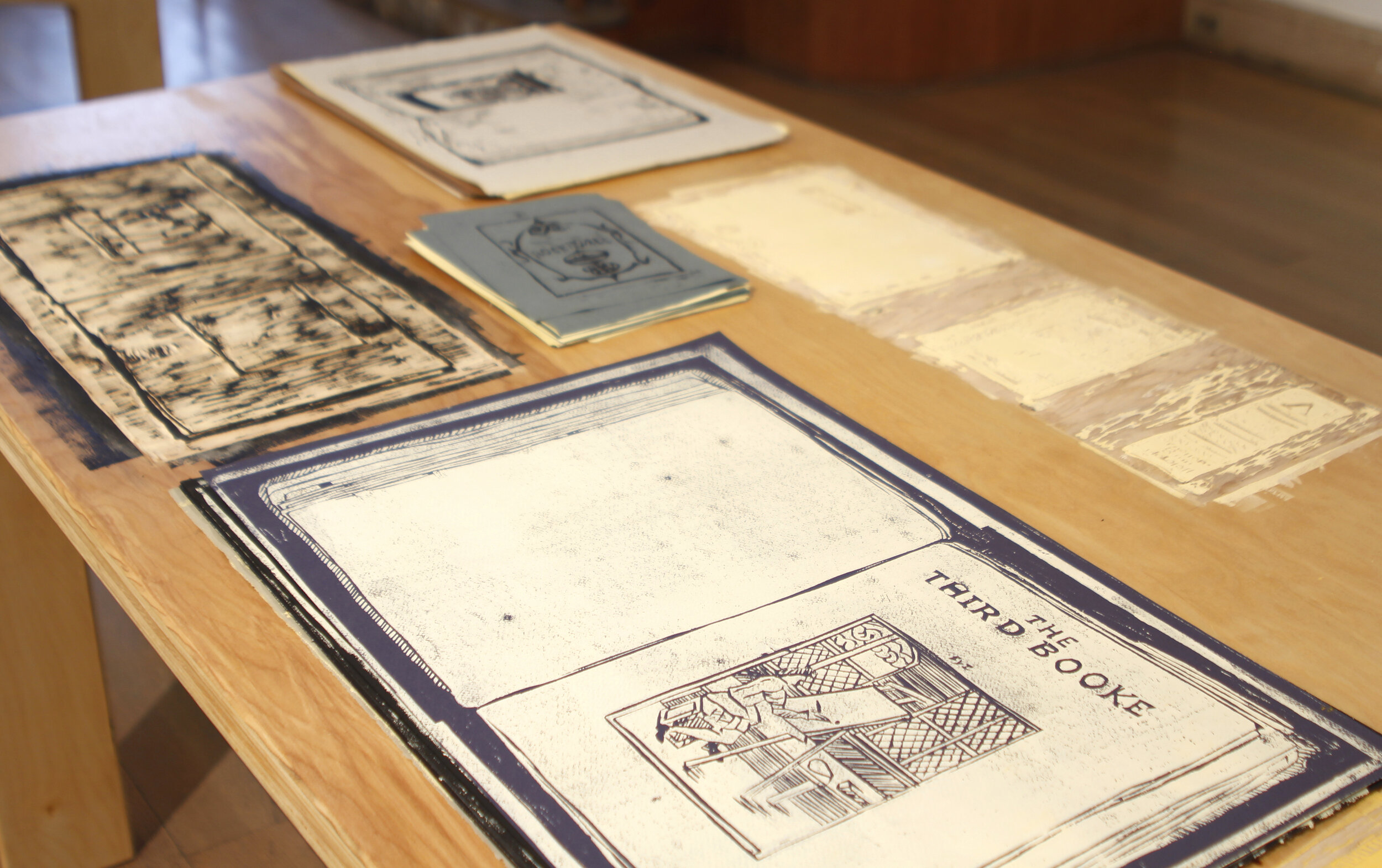
Circulation, 2020
Tables with woodcut surfaces, woodcut prints, and traced graphite drawing. Dimensions variable; installation view.
Alverthorpe Manor, which houses the Abington Art Center, was built for Lessing J. and Edith Rosenwald in 1939. Lessing was the co-owner and president of Sears, Roebuck, and Co. and an avid and passionate collector of art, specializing in prints, drawings, and rare books. His collection was housed here at Alverthorpe, in rooms especially designed for the storage, display, and study of works of art and books. He regularly loaned artwork to exhibitions all over the country, and made his collection available to curators, art history scholars, artists, and students of all ages. (I’ve read that in addition to college and university students, each year, Rosenwald welcomed students from a local elementary school.) Rosenwald expressed this same generosity when he made plans for the future of his collections: in 1943, he pledged his collections and all future purchases to the Library of Congress (LOC) and the National Gallery of Art (NGA), where they became the shared cultural treasures of the nation.
Circulation was inspired by Rosenwald’s collections and Alverthorpe as the place these collections were stored, and shared. Prints and books are, by nature, designed to be distributed, to reach a wide audience of viewers and readers. Rosenwald shared his collections — by loaning works, by inviting researchers to Alverthorpe, and, ultimately, by donating everything to accessible, public collections. All of the images in Circulation come from the digitized online collections of the LOC and NGA, a 21st century strategy of sharing and distribution. In Circulation, the tables (inspired by the design of the study tables in Rosenwald’s library) are sites of production, reproduction, and distribution.
View of a site-specific installation at Alverthorpe Manor/Abington Art Center:. The images in Circulation come from the digitized online collections of the LOC and NGA, a 21st century strategy of sharing and distribution. In Circulation, the tables (inspired by the design of the study tables in the original library) are sites of production, reproduction, and distribution.
Untitled prints, 2020 Screenprint and woodblock print on paper Source: German 15th Century, The Sudarium, c. 1480, paste print, NGA, Rosenwald Collection, 1943.3.795
Untitled wall drawing, 2020 Source: Lessing Julius Rosenwald, Still Life (Apples and Basket), charcoal on laid paper, National Gallery of Art, Rosenwald Collection, 1980.45.1231





